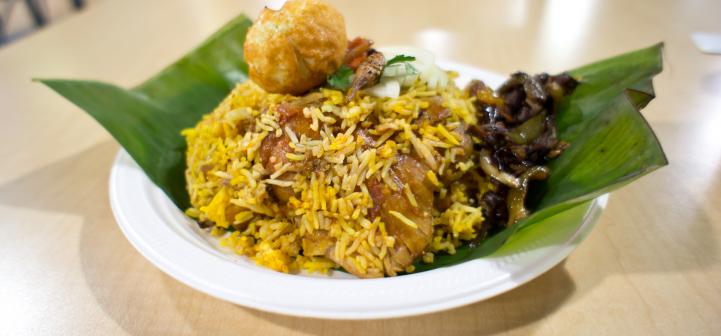
As racial and ethnic diversity continues to increase in the US, school food programs incorporating culturally appropriate meals are meeting students’ nutritional needs while encouraging appreciation and respect for the diverse foodways of students and their families. Melissa Honeywood, the Director of Food and Nutrition Services for Cambridge Public Schools in Massachusetts, has a daily mission: promote community cohesion through serving foods representative of the diverse cultures of Cambridge students.
Applying knowledge and skills from her background in foodservice and dietetics, Honeywood and her staff work to celebrate the diversity of her school district comprised of immigrants, refugees, and transitory students whose parents are fellows at nearby Tufts and Harvard universities. Honeywood expresses how important it is for her students, especially those whose native language is not English, to “see something familiar and feel like they have ownership over their food.” After all, “everybody has a valid opinion on what good food is,” says Honeywood.
However, not all dishes served will be familiar to students of all cultural backgrounds. Therefore, an influx of diverse menu items in the Cambridge school lunch program launched its current taste-testing program, executed in partnership with the Cambridge Health Department. Volunteers serve sample-sized portions of dishes in order to provide students a “safe environment to try new things,” before making them regular menu items. Otherwise, the nearly 50% of students receiving a free or reduced price lunch every day could risk choosing a meal they do not enjoy or stick to their typical lunch. Honeywood points to the program’s success by recalling a tomato tofu dish for the Chinese New Year that was served without taste testing first. As a result, students were more reluctant to try it.
Identifying menu options is a team effort. Students make suggestions about adding ingredients to dishes they taste test based on their families’ preparation of the same meals. A community engagement team meets with parents and encourages them to offer feedback about integrating new foods and submit recipes. In addition, recipes must meet USDA nutrition standards and staff must be able to plan logistics regarding timing and equipment. For example, a Haitian stew called “legume” was anticipated to take only an hour to cook, though Mary, a foodservice worker, noted the traditional dish actually cooks for six hours.
Melissa can also attest to the logistical challenges of the kitchen, but she greatly appreciates her staff’s flexibility to execute the lunch program’s vision every day. “…they will experiment with things that they may not be familiar with in order to provide a new opportunity for students to try something,” says Honeywood.
From Bangladeshi Chicken Biryani to Jamaican Jerk chicken, Melissa Honeywood and the Cambridge community are spreading awareness about different cultures and diversifying the palates of children. Honeywood is truly grateful that her students and staff members are able to “suspend their own vision, their own framework of what school lunch is and to be open to the possibility of trying something new.” She believes that her initiative is transferable to other school districts as well. “What makes programs successful is catering to your school culture,” says Honeywood. “Working together to identify what the obstacles are and trying to overcome it is the best advice I would have.”
Contributors
Allison Milch and Alisha Gaines, PhD, Cornell University, Division of Nutritional Sciences
Resources
Enriching School Lunches with Greater Nutritional and Cultural Values, eXtension.org
From Pho to Burritos: Highlighting Doug Davis, Director of Food Services for Burlington Public Schools, eXtension.org
Massachusetts Service Organizations Drive Initiatives to Provide Healthy, Culturally Diverse School Food, eXtension.org
Massachusetts, Alex Freedman Foodcorps. SERVING UP TRADITION: A Guide for School Food in Culturally Diverse Communities (n.d.): n. pag. Food Corps Massachusetts. Web. 19 Oct. 2016.
